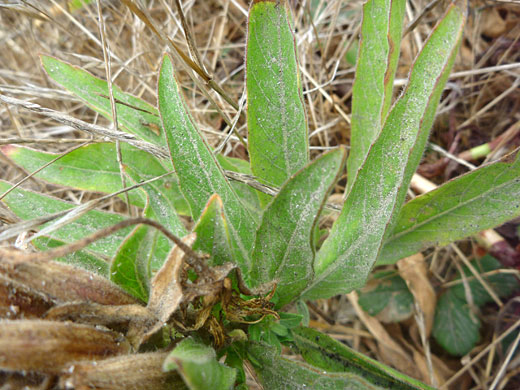Oenothera Glazioviana, Red-Sepal Evening Primrose
Plants > Wildflowers > Onagraceae > Oenothera Glazioviana
Common names:
Red-sepal evening primrose, large-flowered evening primrose
Family:
Scientific name:
Oenothera glazioviana
Main flower color:
Range:
Coastal areas of the Pacific states (non-native)
Height:
Up to 4 feet
Habitat:
Roadsides, beach margins, other disturbed places
Leaves:
Lanceolate to elliptic, up to 5 inches long. Edges entire or toothed
Season:
June to September
Oenothera glazioviana is a naturalized plant, and probably a hybrid, thought to originate in Europe. In the US it is found along the Pacific coast and adjacent areas, up to about 1,500 feet. Stems are stout, growing upwards, bearing relatively large leaves at closely-spaced, alternate intervals. Leaf edges are somewhat crinkled, or folded up, and they may be either toothed or entire. Stems and leaves have a covering of short strigose hairs, and also longer, spreading hairs, which have red bases.
Both petals and sepals are also large, in the range one to two inches long. The four sepals are red on the outer surface, pinkish on the inner, and when mature they bend fully backwards, lying against the stalk. The four petals are yellow, becoming orange then red as they age.
Both petals and sepals are also large, in the range one to two inches long. The four sepals are red on the outer surface, pinkish on the inner, and when mature they bend fully backwards, lying against the stalk. The four petals are yellow, becoming orange then red as they age.
All Contents © Copyright The American Southwest | Comments and Questions | Contribute | Site Map



